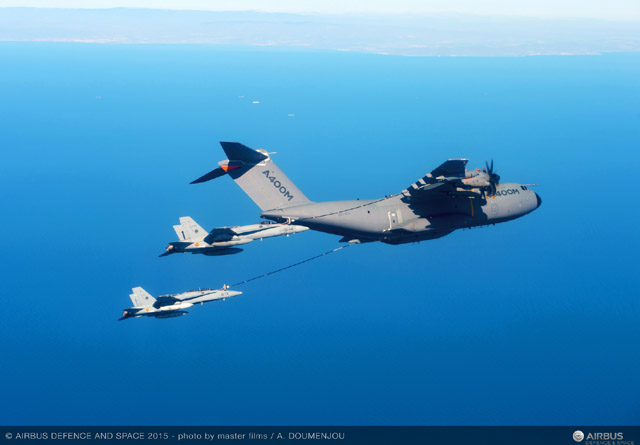Leeham News and Analysis
There's more to real news than a news release.
Pontifications: Remote control of airliners a bad idea
March 30, 2015: In the aftermath of what a French prosecutor said was the apparent suicide-mass murder of 150 people on Germanwings 9525, there have been some calls for and questions of creating a system of allowing ground controllers to assume command of airborne airliners in the event rogue pilot situation develops.
This is a bad idea. Read more
Update (3), Germanwings: Authorities confirms co-pilot deliberately crashed aircraft.
Update March 26, 2015: The Marseilles prosecutor Brice Robin has confirmed that the co-pilot, Andreas Lubitz 28, from Montabaur Germany, put the autopilot on descent and was alive at the impact with ground, the accident is now turning from an involuntary to voluntary manslaughter investigation says the prosecutor.
He further revealed that the co-pilots breath can be heard on the tape as can the calls from ATC and the Captains efforts to enter the cockpit. The autopilots “Pull Up, Pull Up” can also be heard as the ground proximity warning triggered. Passengers screaming just before impact can also be heard. The co-pilot did not say anything but his breath is heard until impact. Research has failed to show any terrorist connections for Andreas Lubitz says Robin.
French news is now analyzing possible reasons for this act by the co-pilot pictured here in front of Golden Gate bridge:
Flightradar24 has a private receiver network for the aircraft’s intelligent transponder of type ADS-B. They now confirm that the aircraft’s autopilot was manually changed from 38,000 to 96 ft at 09:30:55 UTC.
March 25, 2015: In a breathtaking, stunning revelation, the New York Times reported today that an investigator of the Germanwings accident says the Cockpit Voice Recorder indicates one pilot was out of the cockpit and was unable to get back in.
The pilot can be heard initially knocking on the door to gain reentry, then pounding on the door and yelling to the other pilot. No response.
The scene is horrific to contemplate: the passengers must have heard the locked-out pilot and became increasingly alarmed as the plane descended from 38,000 ft to impact at around 6,000 ft.
This scenario immediately raises two possibilities: an intentional act by the pilot remaining in the cockpit; or an incapacitating medical emergency occurred.
We spoke with John Cox of Safety Operating Systems and a former Airbus A320 captain to discuss this latest news. Cox is also a safety analyst for the NBC network in the US.
Odds and Ends: Turkish tests A380; Boeing’s cash out; A400M milestone before Airbus Group results
18 Feb 2015: Turkish Airlines is contemplating testing A380 operations according to Blomberg by wet leasing two A380 from Malaysian Airlines. Turkish did the same when they tested the Boeing 777 before ordering it, then by wet leasing 777 from Jet Airways.
The deal would be good for both Turkish Airlines which could test the A380 to see if there is sufficient demand on their densest routes and for Malaysian Airlines as recent disasters has meant they no longer need the capacity of their six A380.
Probable destinations for Turkish would be London Heathrow and JFK. The two aircraft would be operated by Malaysian Airlines pilots and Malaysian would also furnish half the cabin crew during the first six months, the other half coming from Turkish. After the initial period there would be a dry lease phase where Turkish would continue with own crews. A third backup aircraft should be part of the deal.
Boeings CEO, Jim McNerney, has told investors at a Barclay’s investor conference that Boeing can use of to 80% of its free cash flow to pay back to investors without endangering planned R&D projects reports Reuters. Partly this comes from being able to keep the 777 production rates at around the current 100 aircraft per year in the bridge to the 777X. To entice airlines to continue buying the present 777, Boeing is working on improvements to the aircraft that will increase the efficiency by 2 %, half of which will be coming from improved GE90 engines and half from airframe changes.
McNerney further said the higher than expected deferred 787 productions costs were due to investments in production methods and the labor costs not coming down as expected. He also commented on the work on a new aircraft for the market between the present 737 and 787, “the 757 market” where he said the only thing which is clear is that the airlines want a slightly larger aircraft and we don’t see the market needing a solution in the near to mid term.
Airbus Groups results will be announced in a press conference from Munich Friday next week and their Military aircraft division is working on the outstanding improvements they owe A440M customers. Timely before the press conference they have now demonstrated the A400M working as a combined logistical transporter and tanker. In a series of rendezvous over four flights they transferred a total of 27 tonnes of fuel to two Spanish Air Force F18.
From the press release: “With a basic fuel capacity of 50.8 tonnes which can be increased by the use of extra cargo hold tanks, the A400M is the most capable tactical tanker in the market. The standard A400M aircraft has full provisions for air-to-air refuelling (AAR) operations already installed and only requires the rapid installation of the optional air-to-air refuelling kit to become a tanker.”
Our article shows that this is but one of the capabilities that should have been in delivered aircraft by now, Airbus is expected to announce further provisions for A400M development at the event.
Real time tracking, FDR transmission needs to happen now
As time passes following the Dec. 28 crash of AirAsia flight 8501, it has become even more apparent that the need for real time tracking of the position of a commercial flight and real time transmission of flight data recorder information is necessary.
The issues aren’t new. Airplanes have gone missing since the dawn of aviation. Real impetus began to pick up after the 2009 disappearance of Air France flight 447. This flight went down over the South Atlantic in proximity to major thunderstorms. Radar coverage indicated the flight track but not the final position. ACARS, the system monitoring the health of the aircraft’s systems, transmitted enough information so that the airline, investigators and Airbus had a reasonable picture of what happened but a picture that was incomplete. It took five days to locate the first debris and bodies in the water and two years to locate and retrieve the black boxes, which filled in the picture of a flight crew in complete befuddlement over what was happening to their airplane. The accident was entirely avoidable, and the circumstances incorporated into future training may well save lives.
Despite the delay in finding the airplane and black boxes, the airline industry and regulators did nothing to require real time tracking and data transmission.
AirAsia update: debris from flight confirmed; airline was implementing real-time tracking
Dec. 30, 2014: Debris and bodies have been found and confirmed coming from AirAsia Flight QZ8501, bringing closure for the families and friends of the flight that disappeared on Sunday local time.
Reports of shadows that could be a wing or fuselage in water about 30 meters deep have also been seen.
Some debris and bodies have already been recovered.
If the main body of the wreckage has also been spotted, recovery of the all-important flight data and cockpit voice recorders could come rather quickly.
Top 10 Leeham News stories of 2014
Dec. 30, 2014: This was a highly active news year. Airbus launched the A330neo and A321neoLR. Boeing firmed up more than 200 orders for the 777X. Emirates canceled 70 A350 orders, a record cancellation when no customer collapse was involved. Boeing and its principal union, the IAM 751, faced off in a bitter contract vote. And on the truly dark side, Malaysian Airlines lost MH370 and MH17.
The Top 10 stories read on Leeham News included all of the above but MH17. Others made the Top 10 list. Here it is:
Regulators dither on real-time tracking as another airplane goes missing
Air France 447.
Malaysia Airlines MH370.
AirAsia QZ8501.
Dec. 28, 2014: Each flight disappeared over water. Search parties had a general idea where to look for AF447, but it still took five days before wreckage was spotted in the water and two years before the flight recorder and cockpit voice recorder were recovered.
Searchers think they know generally–very generally–where to look for MH370, but no wreckage at all has been spotted.
And now there’s AirAsia QZ8501. Searchers have a general idea where to look, but not precisely.
Aviation regulators are infamous for their “tombstone” mentality–not requiring safety changes until people die.
How many people have to die before regulators finally mandate real-time flight tracking?
ICAO, the international organization that overseas safety and regulatory issues, has been dithering since MH370 about mandating real-time flight tracking. But the issue has been around since the 2009 Air France crash. There has been no action.
AirAsia demonstrates that real-time tracking is not just trans-ocean flights that need tracking. MH370 also showed this–the flight was a relatively short, intra-Asia flight with an even shorter over-water portion when contact was lost.
It’s time for ICAO to make a decision, and if it doesn’t then individual country regulators need to step up and require real-time tracking. This won’t save the lives lost but recovering wreckage and the black boxes in a timely manner could lead to safety and operational changes that will save lives in the future.
We don’t need more tombstones.




